Sea rays are flying-saucer-shaped fish with long tails that skim along the seafloor. Many people lump all sea rays together and call them stingrays, but not all sea rays sting. In fact, some don’t even have stingers. A stingray is just one type of sea ray. In total, there are some 600 species of sea ray!
Even without a stinger, rays can be dangerous. We couldn’t expect any less, considering they’re descendants of sharks. So, apart from having very strong teeth, some rays can sting, and some can even produce electric discharges.
Sea rays are descendants of sharks
Sea rays are closely related to sharks. Rays first appeared in the fossil record about 200 million years ago, about 200 million years after the first sharks. They are believed to have evolved from flattened shark species.
Both animals share the same general skeletal structure. But did you know neither sharks nor rays have bones? Instead they have cartilage, a light, flexible and strong connective tissue. This exceptional adaptation improves their maneuverability and resistance underwater.
Thus, the ray is a cartilaginous fish belonging to the Batoidea superorder. These animals are easy to recognize because they’re very flat and, in the vast majority of cases, have long, round fins to move quickly through the water, and long, thin tails.
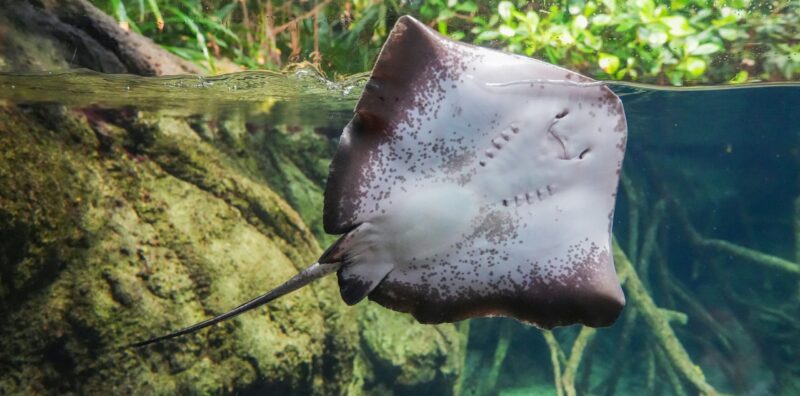
A very peculiar anatomy
These animals have fins that surround their entire body. The pectoral fins form a large disc and begin at the back of the skull. These fins are always undulating because, if they didn’t, the animal would sink. The pelvic fins are quite small and are integrated behind the pectoral fins.
The tail can be short and robust or thin and elongated. However, most species have a fairly long and thin tail.
As they are fish, rays have gills to breathe. In fact, they have five pairs of gill slits in the lower part of their body.
In addition, at the top of their body, next to the eyes, are the so-called spiracles, which are often confused with the eyes. The spiracles help them breathe when they are half buried and camouflaged under the sand.
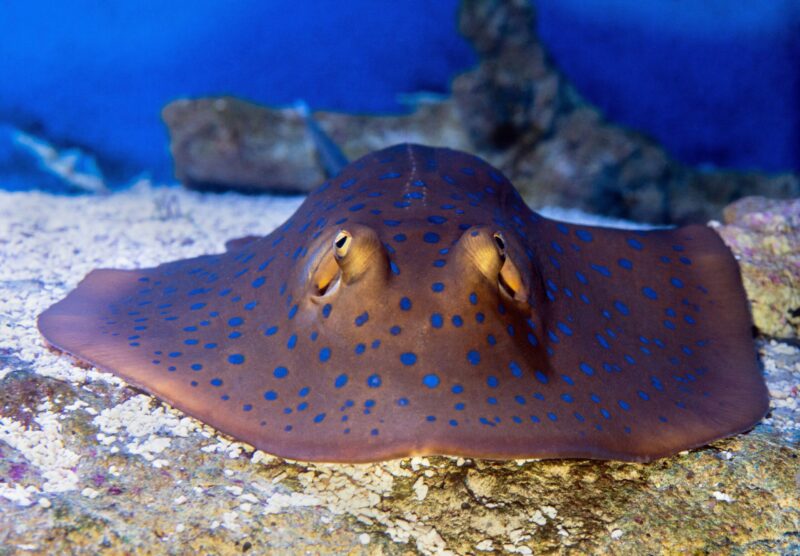
Be careful, some sea rays can sting
Many rays don’t even have a stinger, and those that have it use it as a defensive weapon. So these animals only use it when they feel attacked.
This stinger is located above the tail and is replaced by another from time to time. That’s why some rays have two or three stingers.
The stinger on some rays is poisonous and very dangerous. Even a newborn stingray already has poison in its stinger.

Electric rays
Some rays also produce electrical shocks. Electric rays spend much of the day camouflaged under the sand and go out to hunt at night. They emit electric shocks of up to 220 volts to defend themselves against predators or to stun their prey.
We are all electric in one way or another, but these rays have enhanced this characteristic with specialized organs. They produce their discharges from electric organs on either side of their head, the tail or near the tail, depending on the type of electric ray. Furthermore, they get to decide when to use them. They can generate several discharges in a row, but they lose strength.
Within the electric organs are cells called electrocytes arranged in stacked columns. Electrocytes are modified cells either of muscle (in most cases) or neural origin. These cells generate the electric punch. The number of electrocytes in a column and the number of columns dictate how much electricity the fish can produce.

Flotation system and feeding habits
The main factor that provides buoyancy to sharks and rays is their large liver (up to 25% of the body weight in some species).
Sharks and rays have teeth and cannot feed effectively with broken or worn teeth. Fortunately, they continue to shed and replace teeth throughout their lives.
Sea rays are dynamic hunters. They use a clever technique. Because of their flattened shape, they go to the bottom of the sea, move the sand with their fins to spread it over themselves and hide to catch their prey. Their favorite food is crustaceans, mollusks and small fish.
And here’s a curious fact. Since rays’ eyes are on the top of the body, but the mouth is on the bottom, it can be difficult for them to find their food. However, there is a lot of life on the seabed, and any unsuspecting animal turns out to be an excellent option.
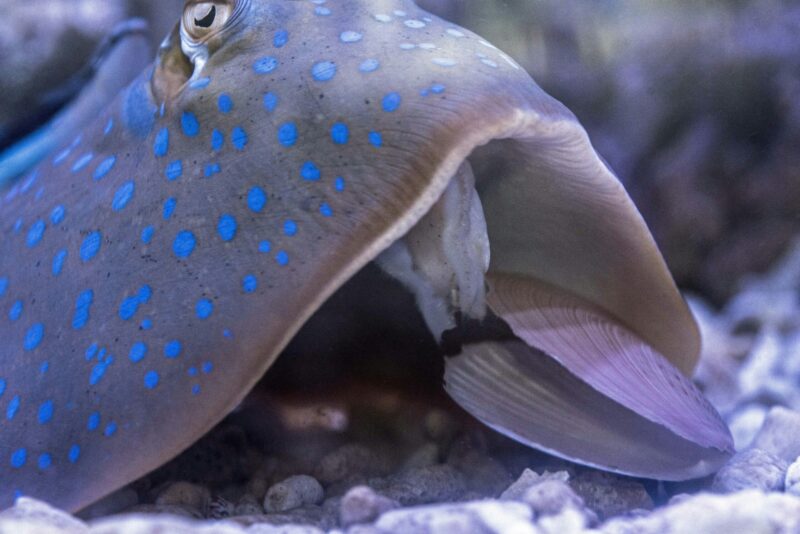
The ecosystem says thank you
Sea rays are valuable to ecosystems. When these animals move across the seafloor and move sand, they help build microhabitats for tiny creatures. In this way, they create homes for various small invertebrates. By doing this, they also help many other marine species feed on small fish.
In addition, rays are oxygen generators. Some rays can dive to almost 6,600 feet (2,000 meters) to feed. When they return to the surface, they defecate, depositing essential nutrients for phytoplankton. In case you didn’t know, phytoplankton produce half of Earth’s oxygen supply.
The ingredients necessary for phytoplankton to carry out photosynthesis are carbon dioxide, light and nutrients. The light is obtained directly from the sun. And since the ocean is an open system, it’s constantly exchanging carbon dioxide. But what about the nutrients? Well, they float on the surface, but they also sink due to gravity to the bottom of the ocean … And this is where our saviors, the rays, come in.
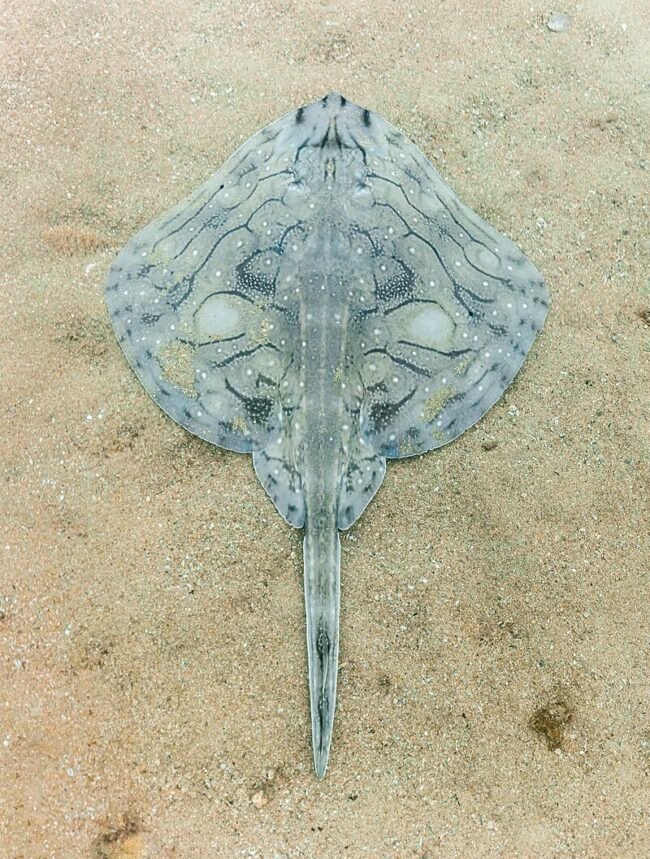
An intelligent animal
Rays have a very large brain in relation to their body size. This superbrain is not only big but makes it quite intelligent. In fact, rays recognize themselves in the mirror, an ability they share with dolphins, primates and elephants, indicating high cognitive functions.
These incredibly intelligent animals can create mental maps of their underwater environment, a sign of their highly developed long-term memory.

Types of sea rays
Rays are classified into four orders: Myliobatiformes (stingrays, manta rays, and eagle rays), Rajiformes (skates and guitarfish), Pristiformes (sawfish) and Torpediniformes (electric rays).
Manta rays are quite different from other sea rays, because they’re much larger, measuring up to 26 feet (8 m). Additionally, the front of the body of the manta ray is more prominent and they have a less circular silhouette. Manta rays have their mouths in the front, while the other rays have their mouths under the body.
Also, manta rays swim with their mouths wide open, drawing in zooplankton and krill. So, they feed primarily on planktonic organisms, but they also eat shrimp plus small and moderately sized fish.
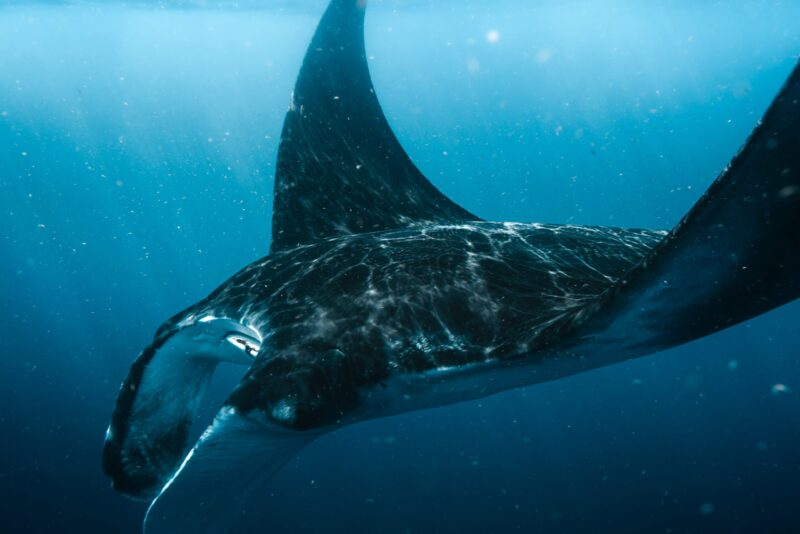
Here’s a look at a few of the 600 species of sea rays:
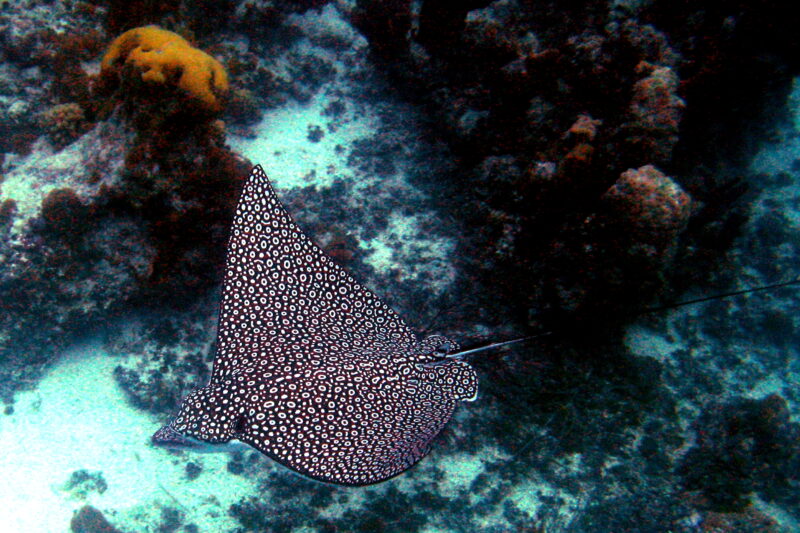
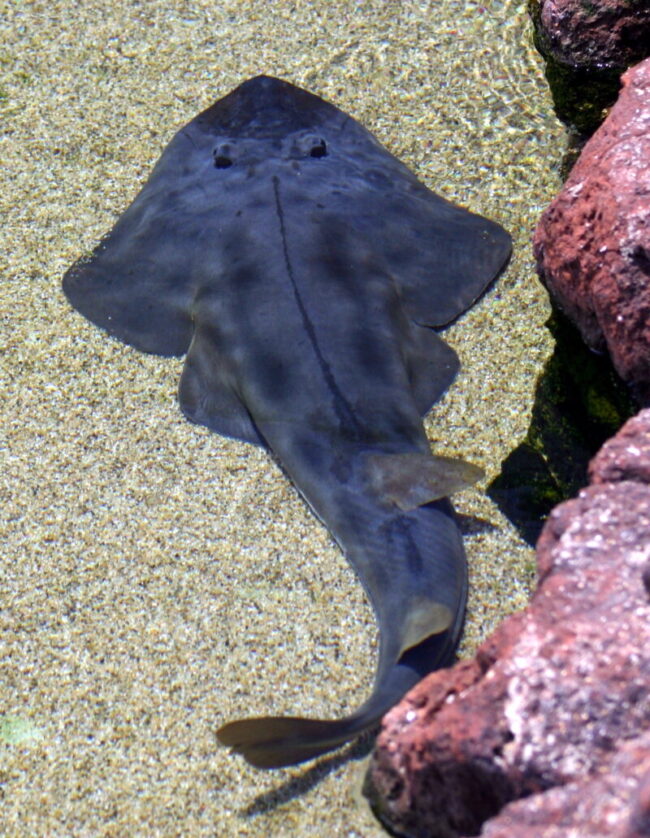
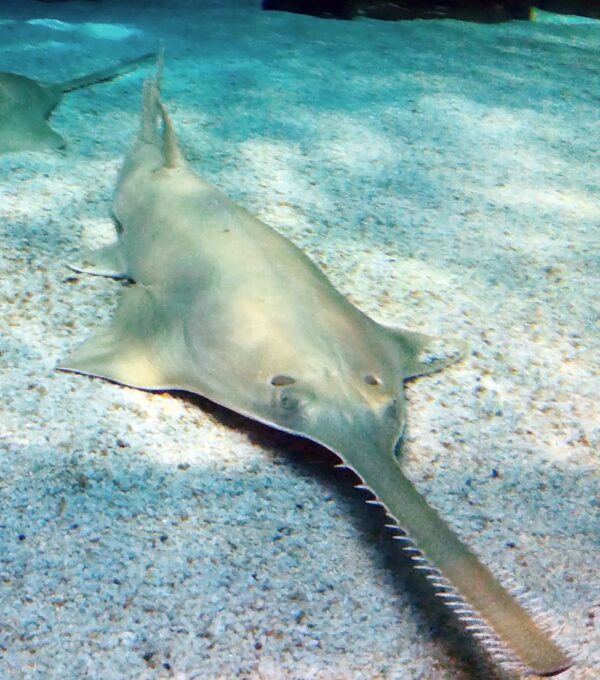
Habitat
Sea rays are found around the world. Some rays live in fresh water systems. Most rays inhabit coastal waters close to shore. Only a few species, like manta rays, live in open oceans. There have even been cases of rays reaching rivers, although this is not common.
Bottom line: Sea rays are descendants of sharks. They have strong teeth and some can be dangerous with stingers or electric discharges.
Ocean sunfish are odd, gentle giants: Lifeform of the week
Sea turtles are as old as dinosaurs: Lifeform of the week
Seahorses are tiny, ravenous creatures: Lifeform of the week











